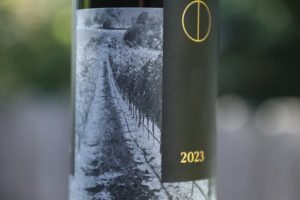
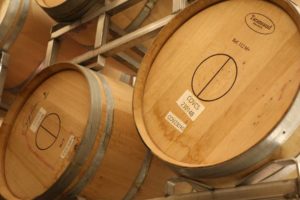
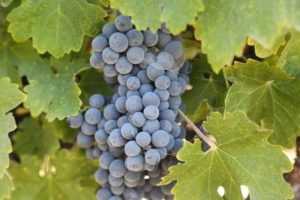 Covalence Wine was founded by Adam Ressner and Jonathan Rhyne, both of Raleigh, North Carolina. Their introduction to each other came through their wives, Tess (Adam) and Caitlin (Jonathan). Tess and Caitlin were childhood friends living in the same neighborhood, just down the street from each other. Both became life long friends. Adam and Tess lived in Chicago and then moved to Toronto for work. Caitlin’s husband Jonathan visited Toronto for a work conference and enjoyed the city. Soon after his work visit, both he and Caitlin moved to Toronto. Kaitlin suggested that the husbands meet; Adam recalls that he asked Jonathan to meet at a local brewery. So they did. Both couples eventually moved back to Raleigh.
Covalence Wine was founded by Adam Ressner and Jonathan Rhyne, both of Raleigh, North Carolina. Their introduction to each other came through their wives, Tess (Adam) and Caitlin (Jonathan). Tess and Caitlin were childhood friends living in the same neighborhood, just down the street from each other. Both became life long friends. Adam and Tess lived in Chicago and then moved to Toronto for work. Caitlin’s husband Jonathan visited Toronto for a work conference and enjoyed the city. Soon after his work visit, both he and Caitlin moved to Toronto. Kaitlin suggested that the husbands meet; Adam recalls that he asked Jonathan to meet at a local brewery. So they did. Both couples eventually moved back to Raleigh.
The story of Covalence starts in March 2020. Both couples were home with new born children. After several months of being cooped up at home, they began to think about how they could resume some semblance of socialization. Adam heard that that people were meeting in driveways, setting up distanced tables and or chairs. So he suggested to Jonathan that he come over to his house and they spend a wine night in the driveway. There first wine night was on May 6, 2020. They agreed to splurge and bring several exceptional wines; Adam recalls his contribution was a 2012 Schrader Cabernet Sauvignon, Beckstoffer To Kalon Vineyard RBS.
Wine nights evolved into a weekly ritual for the next 18 months; Adam remembers tasting through many great wines, a ‘time out’ where they honed their palates, their knowledge of varieties, vineyards and winemakers. Each man would bring a bottle without telling the other the producer, variety or vintage. They started picking up on winemaker styles and noticing the differences in texture associated between valley floor grown grapes and hillside grapes. The wine was the conduit for building a closer friendship. After a month they began discussing how they could get their families together – so they started family night on Fridays.
And then wine night came indoors later in the summer. And when the weather cooled they moved wine night next to the fire pit. They would sit in the back yard of Adam’s home discussing everything important to them, family, jobs, kids and life in general. And many of these nights would last until 12am or 1am. Looking back, wine nights next to the fire pit were a pivotal part of the inspiration for starting Covalence.
Then life opened up, and work started taking priority and wine nights became less common.
In October 2021, Jonathan approached Adam in his wine room in and asked, “what would you think about starting a wine label”, followed by, “It is ok if you don’t want to do this, but I’m not going to do this by myself”. And then they both talked with their wives. Their advice was, do it. In formulating a vision, they realized that whatever wine they would bottle under their own brand, needed to be of a quality and character that would be something they would be proud of to drink themselves and introduce to others at wine nights.
Late in 2021 Adam began researching a trip to Napa Valley with the purpose of meeting several winemakers including Aaron Pott; both he and Jonathan had visited Napa Valley previously including in spring 2019 when Adam discovered our Napa Wine Project and we met for the first time. During their wine nights they consumed hundreds of bottles including wines from Seven Stones whose founding winemaker was Aaron, wines from his own brand Pott and some of the wines he makes for clients including Greer. When Adam and Jonathan decided to visit Napa Valley in early December 2021 they reached out to us again. And we connected them with Aaron via email; subsequently they met with him at his self-titled estate, Châteauneuf-du-Pott on the rugged slopes of Mt. Veeder.
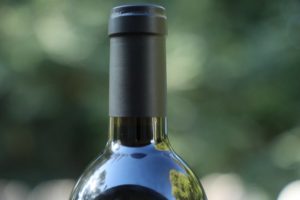
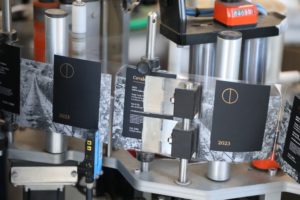 The meeting went well; following their time with Aaron they both asked themselves somewhat jokingly, “How crazy would it be if Aaron made our wine”. The timing of their next meeting was fortuitous. About two months later in early February 2022, Aaron attended the Triangle Food & Wine Experience in Raleigh. He was hosting a wine dinner; both Adam and Jonathan were at this same dinner. They approached his table and asked if he remembered them. His reply was, “Of course I remember you”. They discussed more details about their proposed wine brand. Adam recalls that over the subsequent weeks, they gave Aaron ample opportunities to say no, but he never did and ultimately agreed to become their winemaker.
The meeting went well; following their time with Aaron they both asked themselves somewhat jokingly, “How crazy would it be if Aaron made our wine”. The timing of their next meeting was fortuitous. About two months later in early February 2022, Aaron attended the Triangle Food & Wine Experience in Raleigh. He was hosting a wine dinner; both Adam and Jonathan were at this same dinner. They approached his table and asked if he remembered them. His reply was, “Of course I remember you”. They discussed more details about their proposed wine brand. Adam recalls that over the subsequent weeks, they gave Aaron ample opportunities to say no, but he never did and ultimately agreed to become their winemaker.
Aaron introduced them to a very special site in the Stags Leap District, owned by vintner Carl Doumani (Stags’ Leap Winery and Quixote, died in 2025). This two acre vineyard is located on the hillside east and just above the pond at Quixote Winery ranging in elevation from 300 to 600 feet ASL. And this body of water used to be referred to as ‘the puddle’ by Doumani. This vineyard features an upper and lower block, both going to Covalence. These blocks are primarily planted to Cabernet Sauvignon with a very small section planted to Petite Sirah. These blocks are sandwiched in between Shafer Vineyards and Quixote Vineyard and adjacent to one of the blocks Shafer sources for their Hillside Select.
The lower block was planted in 1997, originally to two acres of Petite Sirah. One acre was later grafted to Cabernet Sauvignon. In 2016 Aaron oversaw the planting of the upper block, all to Cabernet Sauvignon. Prior to Covalence, the Petite Sirah from these blocks were used in Doumani’s wine label, ¿Como No?
The inaugural vintage of Covalence was in 2022; this vintage, despite being from the same vineyard, offers a significantly different character than the 2023 bottling. 2022 was a particularly challenging year in Napa Valley later in the growing season. A prolonged extreme period of heat centered around Labor Day weekend was an extremely challenging and rare event that tested the viticulture prowess and available tools of vineyard managers across the valley. And affected sites different depending on location, exposure, elevation and varieties. In terms of this vineyard, Aaron said afterwards something like, “It faired pretty darn well considering the circumstances”. This vintage in general from Napa Valley features both a ripeness but also a textural softness, the same attributes in the Covalence 2022 bottling.
Much later, Adam asked Aaron why he agreed to become their winemaker. Aaron admitted that people regularly call and ask him to make wine; his reply to those inquiries is usually something like, “I’m going into a tunnel, sorry reception is very poor”, then for emphasis he would make some crackling nose signifying the ‘poor reception” and then the phone would disconnect.
The reason he agreed to be their winemaker was three fold. He said, “first and foremost, I really like you guys and I only want to work with people I like, I know you don’t care about ratings and I don’t make wine for the ratings and lastly, you aren’t old”. And he probably was attracted to the fact they were extremely passionate about wine and wanted to learn more about the business. And perhaps unlike his other clients who owned vineyards in Napa Valley, they did not and could be more flexible on where the grapes were sourced from.
Select vintages
The 2023 Covalence Cabernet Sauvignon is 100% varietal; this vineyard produces dark inky colored wines. This wine is deep ruby with an amaranthine color and is very opaque; immediately polished, the darkly fruited bouquet smells like ripe blackberry, dark cherry, Santa Rosa plum, boysenberry and dark mulberry. A darker floral component plays friendly with the fruit including of violets and lilac. Additional layers include tobacco, old cedar box, graphite and a pleasant kiss of dried herbs including sage. And as it evolves, it offers a layer of cocoa powder. This wine tastes like dark plum, fresh blueberries, blackberries, boysenberries and dark cherries. Lingers savory, minerally and earthy with a ferrous, dusty and highly persistent chalky character. This standout bottling manages to be both complex and layered while simultaneously lithe in its youth. The gravelly and grainy, firmly textured and broadly coating tannins outlast the fruit by far at this age on the finish. Surely this wine has years of life ahead of it with the proper cellaring. For reference this bottle was pulled straight from the bottling line and needled and nosed later that evening. Its listed ABV is 14.9%.
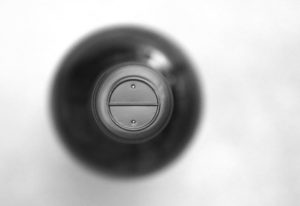 430 cases of this vintage were produced. Adam wishes he could fast forward 15 years from now and drink this wine; we can see whey – for reference, 2023 produced exceptional and what will be highly age worthy Cabernet Sauvignon from Napa Valley.
430 cases of this vintage were produced. Adam wishes he could fast forward 15 years from now and drink this wine; we can see whey – for reference, 2023 produced exceptional and what will be highly age worthy Cabernet Sauvignon from Napa Valley.
The 2022 bottling was all hand labeled. The original bottle for the 2022 vintage was not stocked locally and needed to be freighted in from France. The shipment was two months late, so they missed their original bottling date. And when it arrived it was bulk palatized so all the bottles had to be repacked by hand into individual 12-case boxes. They learned from this first experience; in 2023 they sourced a lighter weight glass but equally as important, a mold that was readily available. And these are just some of the intricacies and challenges of the business.
The Black Lab
The impressive winemaking headquarters of Aaron Pott’s operations are located in a business/industrial park about a 10 minute drive south of the city of Napa. This winery is used for production for a number of other brands that Aaron makes wine for including Covalence. All tanks are hooked up to their own pumps, each tank can be controlled remotely and several high-tech presses are used during harvest. One aspect of the winery immediately evident from a walk-through is its overall cleanliness. And there is an element of fun at play here including a disco ball and part of a wall on one side of the winery is painted with a colorful mural.
A wastewater system is located directly outside the winery, processing waste water and sludge which is then hauled away and used as fertilizer. And a bonus of their location is they are hooked up to the same power grid that serves nearby Napa Valley College and Napa County EMS Agency so theoretically they should have power even during outages. And when the wines are ready to be bottled, a mobile bottling truck pulls up to the back of the winery.
The circle on the label with a line through the center, signifies their fire pit. A covalent bond refers to strength; the line within the circle signifies two bonds attaching. The term covalence in regard to bonding was first used in 1919 by Irving Langmuir in a piece he wrote for the Journal of the American Chemical Society. His article was titled, The Arrangement of Electrons in Atoms and Molecules. But covalence also refers to family, friends and community, the bonds that connect the three.
The image of the vineyard in the Stags Leap District where they source their grapes is on the label. If they ever add another bottling, they will also use an image from that vineyard. Two designers who work for Jonathan’s company Nutrient, created the handsome label. The label was printed by Sonoma based, CCL Label Industries. And every bottle is numbered. Adam and Jonathan oversee everything related to this small brand except that actual winemaking. That is Aaron’s domain.
Total production has ranged from approximately 200 cases to 400 cases. The wines are sold as three-packs and or are available as a very limited selection of etched magnums or double magnums. The first retail business to offer their wines was ACME Wines in St. Helena (for their wine club). For more information or to join the mailing list, visit: www.covalencewine.com

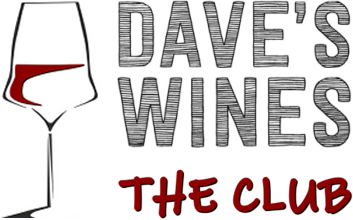




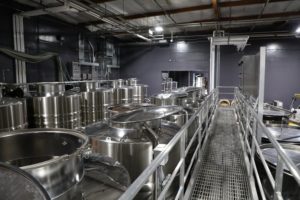
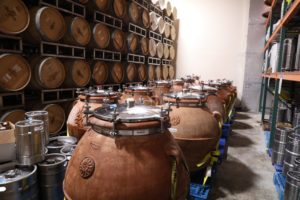

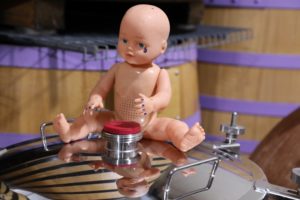
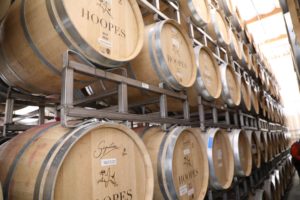
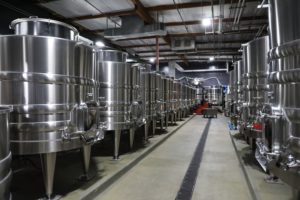
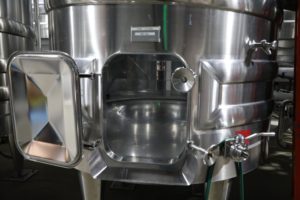
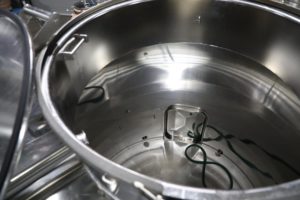
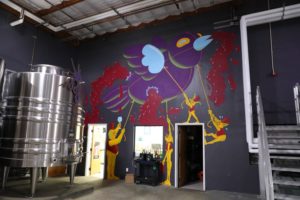
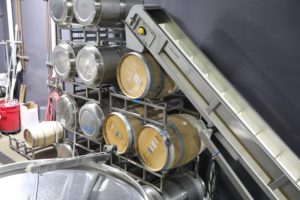
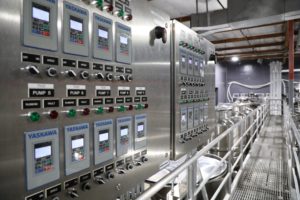
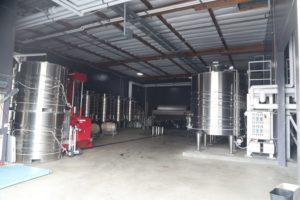
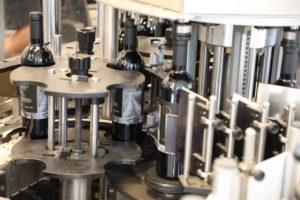
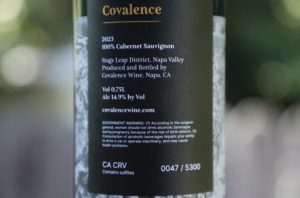
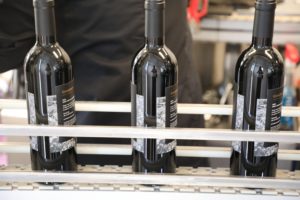
Leave a Reply